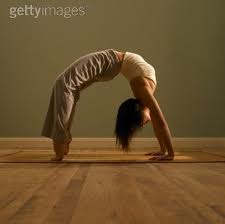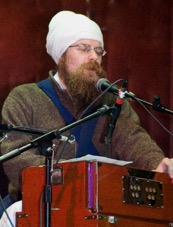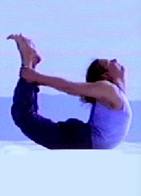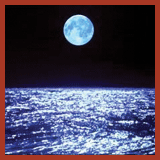- Inner Harmony Yoga
- Ayurveda, yoga, Missoula, lecture, Devi Zdziebko
- brian baty
- gurnam singh, Inner Harmony yoga, Missoula, kirtan,
- Juliet Jivanti, Ayurveda, Yoga, Missoula
- Meditation, yoga, missoula yoga, Gina Mauro
- Missoula yoga
- Missoula yoga, Erich Schiffmann, yoga, workshop, Inner Harmony Yoga
- yoga
- yoga, Advanced yoga
- yoga, back bends, flexability, strength, Missoula
- yoga, hip openers, flexability, Missoula
- yoga, Missoula, 108 sun salutations, Inner Harmony
- yoga, Missoula, retreat, Inner Harmony yoga, back bends, flexablity, bootcamp, yoga retreat
What is Advanced Yoga?

Are you ready for this?
Advanced yoga is not about putting your leg behind your head. It is about stopping where you should stop, and pushing where you should push. We will work with advanced postures, and I won't spend time teaching headstands, instead I will say 'Take a headstand.' You must be comfortable taking a headstand in the middle of the room, or sitting it out. I would like you to be able to kick into a handstand, lift into a full backbend (urdhva dhanurasana, pictured), and be comfortable assisting other people in the class with various postures.
See you on Monday nights, 6:30-8:00!
Gurunam Singh, back in Missoula!

–Gurunam Singh
About a year ago I received an email asking if I had any interest in hosting Gurunam Singh for a Kirtan at the studio. I had never heard of him, but Kirtans I had participated in were some of the most fun and energizing 'concerts' I had ever been to. At first I was worried that I wouldn't meet minimums, no one else had heard of him, or it just wouldn't sell out. I was wrong to worry; we had a blast. When I saw he was coming back through Montana I immediately emailed my contact and soon I had a contract in my hands for July 2nd.
Join us again for this rocking, mantra filled concert and be prepared to sing along and create beautiful vibrations for Missoula and the world. Listen to his music here, check out his website, or watch him on youtube.

Gurunam Singh tours world-wide sharing his powerful and transformative music. He makes mantra chanting and devotional singing easy, vibrant, and totally accessible. "The music does all the work itself. The power of the mantras. I just get out of the way and then it's my blessing, like everyone else who comes to a kirtan, just to be there, to be part of that energy... to sing,” says Gurunam. His enthralling kirtan sound is a cross-over with influences from folk, rock, pop and country to classical indian raag. His simple devotional songs are sweet listening to sooth the mind and heart. Gurunam’s heartfelt stories and humor bring forth a communion with his audiences. He is also known for his fast chanting style that gets people moving and dancing. Gurunam leads workshops, kirtans, intimate evenings, and benefit (seva) concerts/projects. His artistry, heart and spontaneous energy, elevates the vibration of any gathering. “You can want for other things but when you feel the touch of grace the other wants to fade and you bow inside, wanting and hoping for more of that touch. It comes through yoga, meditation, service, prayer. There are many ways to reach it. Music and chanting are fast as light for the heart and soul," Gurunam explains.
Monday, July 2nd 6:30-9:00- $20
You can join us for a rocking, sweaty, yoga class beforehand, 4:00-6:00- $15
This will sell out, please contact us to reserve your ticket at set up a time to pay, or use the PayPal button (fees apply)
Ayurveda
"Ayurveda is beyond beginning and ending. A science of eternal healing, it is compared to a vast ocean, and studying Ayurveda to swimming across. A true teacher can teach one how to swim, but the swimming is up to the student; …it is a lifelong journey."
~Charaka Samhita
A myriad of natural healing theories and methods exist that all seem to conflict with each other. How could they all be right? They can and they are but no one regime works for everyone. Individualization is the key. We are born into different bodies, each with a different heritage, and we have all lived different lives. You may have practiced a system and gotten well and became a convert or didn't and moved onto the next theory. There is a need for a coherent, systemic way of understanding our individual needs and applying remedies to bring back health and happiness. Traditional natural healing systems have already worked out this approach. If we dig deep enough we will find them all dipping from the same stream. Ayurveda has worked out the idea that people are different and need to be treated differently, as well as working out techniques to do just that- successfully. It is a coherent, cohesive theory that explains the success of the spectrum of effective health programs. It explains the reason some people get better on one diet and others need a completely different diet. The overarching concept of energy balance is the glue that holds all the various theories, systems and techniques together.
Ayurveda will help you pursue optimal health so that it becomes a source of pleasure and energy instead of a problem. You will be able to make balanced foods and medicinal, healing, nourishing herbs a part of your entire life- as an everyday, lifetime tonic for better health, energy, stamina, and strength. The Ayurvedic perspective can be seamlessly integrated into your life. Ever wonder if your skin rash, hemorrhoids, diarrhea, balding head and weak eyesight are connected? Ayurveda will give you the tools to reverse all of these and more with a new perspective on your life. With the knowledge of how you are put together as an individual, you will be able to select your diet, know which herbs to take and what style of massage to have.
There's much to learn- and it can be easy, fun and most importantly, effective beyond even what you might imagine. You will become more deeply commited to your health - and will have powerful new tools with which to do something about it.
Erich Schiffmann Workshop

From an asana (posture) standpoint, there is a whole new world of hip openers; Hip Yoga is about to get more interesting (don't worry, these will show up in other classes). He compared asana to musical notes. When you learn about music, you learn the scales, the basics; when you learn postures you learn where hands and feet land. Trikanasana (triangle pose) is taught differently between Iyengar, Yin, Anusara, and Ashtanga, however they are all correct. Some days you feel like a more strict Iyengar version, sometimes a more relaxed Yin variation. Each day can be different. Each pose can be different.
When Erich teaches classes, they tend to be about 10 minutes of meditation, 30 of lead asana, 20 of free form, savasana, and if time is left, a few more minutes of mediation. I always try to start a class by asking what you want to do, sometimes everyone speaks up, and this give me a conundrum. Do I try to fit it all in and not hit somethings enough? Or do I omit a posture that someone needs? Enter free form. Erich turns on music and lets you go. Do what you want/need. It is fun. I will try and do this more in classes, however, it is fairly advanced, so not every class will include it.
Stay-cation Yoga Retreat
Well we currently have no plans to head to Panama or Thailand for a yoga retreat, but why not have a little retreat right here in Missoula?
From Monday, September 13th through Friday, September 17th we will meet at the studio from 8:00 - 10:00am. We will work on lots of things, some we do every class, some we don't. Each day we ate going to have a different focus, from hips to headstands, meditation, pranayama, and of course have an extended savasana.
This is a very unique opportunity to challenge yourself, learn more, and deepen your yoga practice. $80 if you register by September 11th, $90 after, or drop in to any of the classes for $20.
Ayur-Yoga Workshop

I was able to attend the Ayur-Yoga workshop and the wealth of knowledge Juliet had was amazing. Ayurveda is an very vast ocean of information that includes everything from Astrology to Yoga. On Juliet's website, she has a thorough and concise description of Ayurveda, you should read even if you know a bit about the science, as well as brief explanation of the three Doshas. During the workshop, she talked a lot about all three Doshas, defining them further and helping us understand our personal makeup. We are not just one of the three Doshas, but a combination, unique to our self.

Learning from her, I am able to taylor a class better for the students who show up, time of day, or month. For instance, an intense backbending class will feel amazing in the middle of February, when we are energetically dragged down with the weather, however this style of class is too draining for the hot summer months. During the summer, we should practice balance and forward bending postures to cool and calm ourselves from the inside.
We are looking forward to Juliet's next visit in late August. If you would like to learn more, IHY will be hosting a public talk soon, we will keep you posted.
108 Sun Salutes
108 is a very daunting number. When you start the mind is nervous, "Can I do it?" After ten or so the mind is relaxed, "This is easy." Once you reach the mid twenties, the mind goes the other way, "Why am I here? This makes no sense." You go on. Once you reach a certain point, maybe around 45, the next 40 go by in a blur, the mind lets go. Sure the body begins to tire, and you adjust your flow accordingly, maybe taking less of a backbend, or skipping the pushup all together, but once you reach 90, the end is in sight. You regain lost strength. The breath carries you. Then you are done. 108. Do a twist, a happy baby, and then settle into the best Savasana of your life.
Whenever I mention 108 sun salutes, people always ask, "Why 108?" The number 108 is very auspicious. It appears in temples from India to Japan to Cambodia. It appears in astrology- the distance the earth is from the sun is 108 times the sun's diameter. It appears in pop-culture- the Oceanic 6 spent 108 days on the island in the TV show 'Lost.' It is the name of a band, an airport, a hospital and an Italian artist. But my favorite reason- it is said mortals have 108 sins, desires, delusions, and lies we tell. For each sun salute you do, one sin is peeled away, like the layers of an onion. After completion you feel pure, maybe that is why you are able to rest so peacefully.
Remember, you don't have to do all 108. You can rest for one, ten or thirty. Maybe set a goal of resting every third one. You can always stay in downward facing dog, or child pose while your neighbor completes one, then join in again. Remember, it is only 90(ish) minutes, it is by donation, and we will provide tea and fruit after, so what do you have to lose?
Backward Yoga
In our daily life, we often allow the front body to carry and support the back body leading to caved chests, rounded backs, our gaze focused down, and our internal organs to be compressed. Our body is not designed for this posture. The skeleton does not provide support in the front body, there are no bones in the stomach to provide the support. There is, however, our spine in the back body. The spine is designed to carry our weight, to allow our heart to lift, our gaze to look out, and give our organs room to function.
Driving and sitting at a computer are two of the toughest things on our bodies. These two things cave in our front body, making the muscles of the front body shorter and tighter; at the same time our backs round and shoulder blades split apart causing our back bodies to weaken. Over time our lungs and heart get cramped with less room to function freely. Backbends counteract this compression by stretching out our front bodies and strengthening our back bodies. We give our lungs an opportunity to work fully and we give our back body the strength to stand tall and support the front body.
Back bends are also a great natural energy booster. They massage kidneys and adrenal glands, open our hearts and give oxygen to our organs. As we stretch our front bodies, we stimulate blood circulation which will assist just about every body process and improve every system of the body. It will improve the transport of nourishment, the elimination of toxins, and the function of the heart, liver, kidneys and immune system. The lungs stretch and open, allowing a bigger breath and more oxygen to our blood.
All are welcome to this series; beginners encouraged.
Hip Yoga
There are many muscles that we will focus on, and they are all interconnected. These muscles anchor themselves to the ribcage, vertebrae, pelvis and femurs. With so many different attachment points, it is easy to understand as these muscles shorten and grow rigid, you can have discomfort manifest in many ways. Let's take, for example, the iliopsoas, or psoas. It inserts at the top of the femur, runs through the pelvis and attaches on the T12 and L1 vertebrae, the small of the back. It's primary function is to lift the knee, it is our hiking muscle. Do you ever suffer back pain after a long hike, run, or walk? It could be the psoas pulling on the spine. After all, which bone is going to give- a vertebra or a femur? By stretching this muscle out, we can release it and prevent strain being put on our lower back. By the way, as mentioned earlier, the attachment point of the psoas is the T12, the same vertebra where our ribs begin, and our diaphragm attaches to those ribs. Ever have a tight back and have issues taking a complete breathe? See how it is all connected? There are many more examples that we will get into in class.
With so many muscles interconnected in the hips and low back stretching them is an easy way to ease low back pain from sitting, running and just living our daily life. A lot of the postures we will do are great 'everyday' stretches, things you can take away and do on your own.
- Inner Harmony Yoga
- Ayurveda, yoga, Missoula, lecture, Devi Zdziebko
- brian baty
- gurnam singh, Inner Harmony yoga, Missoula, kirtan,
- Juliet Jivanti, Ayurveda, Yoga, Missoula
- Meditation, yoga, missoula yoga, Gina Mauro
- Missoula yoga
- Missoula yoga, Erich Schiffmann, yoga, workshop, Inner Harmony Yoga
- yoga
- yoga, Advanced yoga
- yoga, back bends, flexability, strength, Missoula
- yoga, hip openers, flexability, Missoula
- yoga, Missoula, 108 sun salutations, Inner Harmony
- yoga, Missoula, retreat, Inner Harmony yoga, back bends, flexablity, bootcamp, yoga retreat
